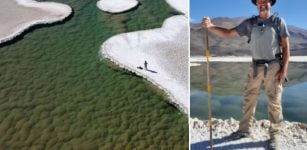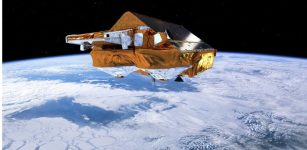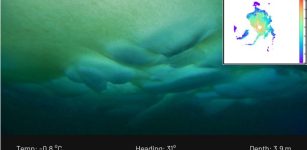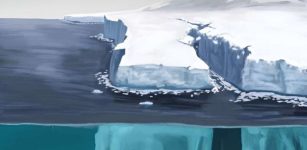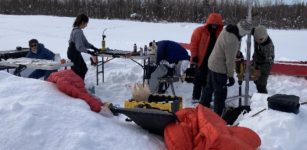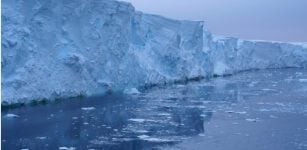What Is The Link Between Global Warming And Risisng Sea Levels?
Eddie Gonzales Jr. – MessageToEagle.com – A McGill study indicates Earth’s natural forces could significantly limit Antarctica’s effect on sea level rise, provided carbon emissions are quickly reduced. However, continued high emissions could result in greater Antarctic ice loss and sea level rise than anticipated.
The field team used specialized instruments from the ANET-POLENET project that measure Antarctica’s ground motion. This GNSS [GPS] station is located on an island of the Backer Islands chain in Pine Island Bay where the massive Pine Island Glacier enters the Amundsen Sea. Credit: Terry Wilson
The finding is significant because the Antarctic Ice Sheet is the largest ice mass on Earth, and the biggest uncertainty in predicting future sea levels is how this ice will respond to climate change.
“With nearly 700 million people living in coastal areas and the potential cost of sea-level rise reaching trillions of dollars by the end of the century, understanding the domino effect of Antarctic ice melt is crucial,” lead author Natalya Gomez, an Associate Professor in McGill’s Department of Earth and Planetary Sciences and Canada Research Chair in Ice sheet—Sea level interactions, said in a press release.
The study examines the ice sheet’s interaction with the underlying earth and how carbon emissions affect this dynamic, an aspect previously understudied.
The ANET-POLENET team flew to remote field sites on Antarctica’s Backer Islands to record bedrock uplift. Ohio State University co-author Terry Wilson is second from the left. Credit: Nicolas Bayou
“Our findings show that while some sea level rise is inevitable, swift and substantive action to lower emissions could prevent some of the most destructive impacts of climate change, particularly for coastal communities,” Gomez said.
Rising seas and nature’s double-edged sword
As ice melts, its weight decreases, causing the land beneath it to rise like an expanding sponge. The researchers say this process, called post-glacial uplift, can be a double-edged sword.
With rapid emissions reduction, post-glacial uplift can slow ice-mass loss by lifting ice, reducing Antarctica’s sea-level rise contribution by up to 40%. However, if carbon emissions remain high, this rebound effect won’t counteract rapid ice melt and may accelerate sea-level rise along coastlines.
This study developed a 3D model of Earth’s interior using geophysical data from the U. S. ANET-POLENET project. The project deployed sensitive instruments across Antarctica to record bedrock uplift and seismic signals. These measurements were crucial for characterizing Antarctic mantle variations in the study.
“Our 3D model reveals Earth’s internal structure, showing variations in mantle thickness and consistency. This helps predict how different areas respond to melting,” commented co-author Maryam Yousefi, a geodesist at Natural Resources Canada and former Postdoctoral Fellow at McGill and Penn State universities.
The study is a collaboration between researchers at McGill, Pennsylvania State, Cambridge, Columbia, Colorado State, Ohio State, the University of Massachusetts Amherst, the University of Washington and the Union of Concerned Scientists.
Written by Eddie Gonzales Jr. – MessageToEagle.com Staff Writer



